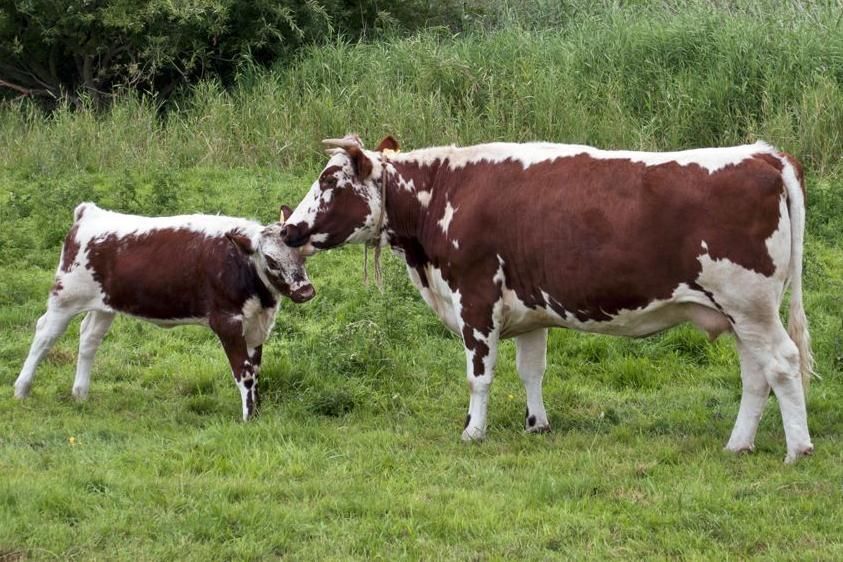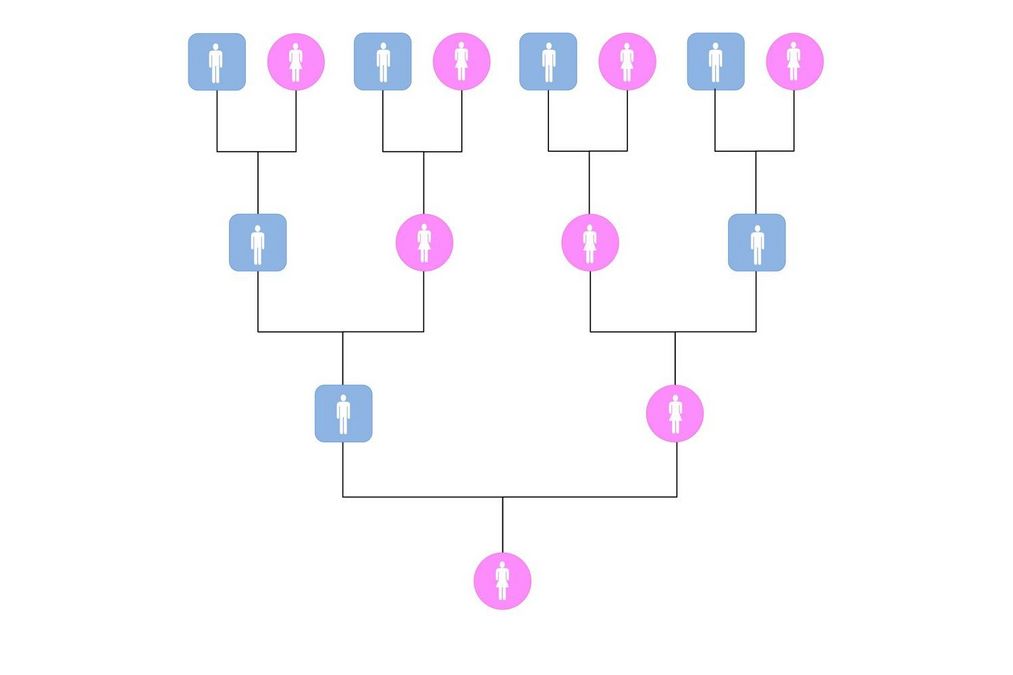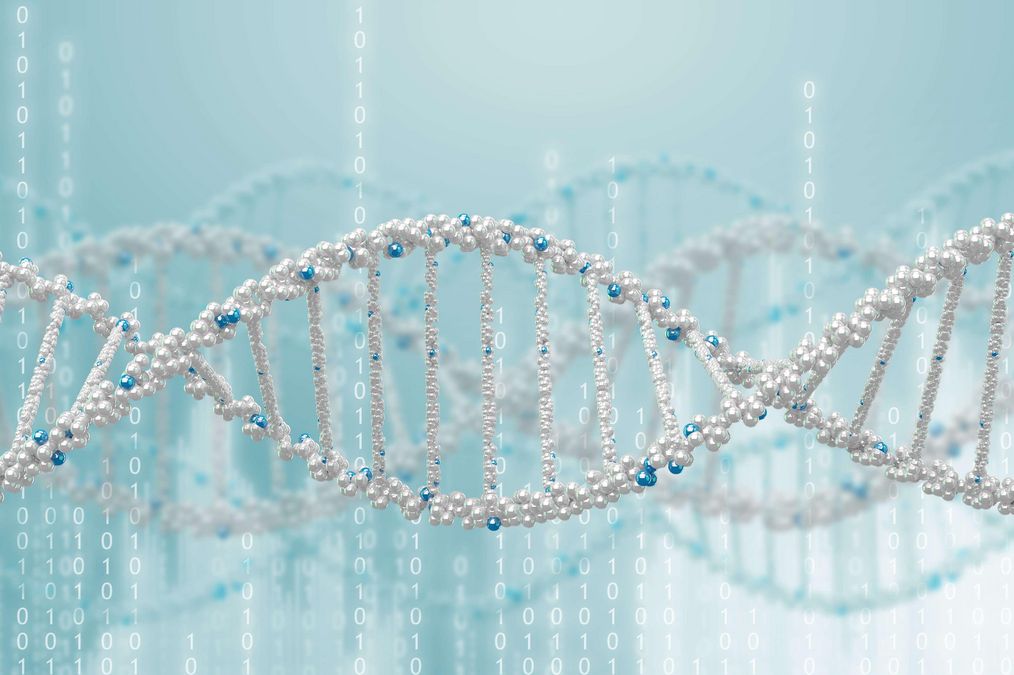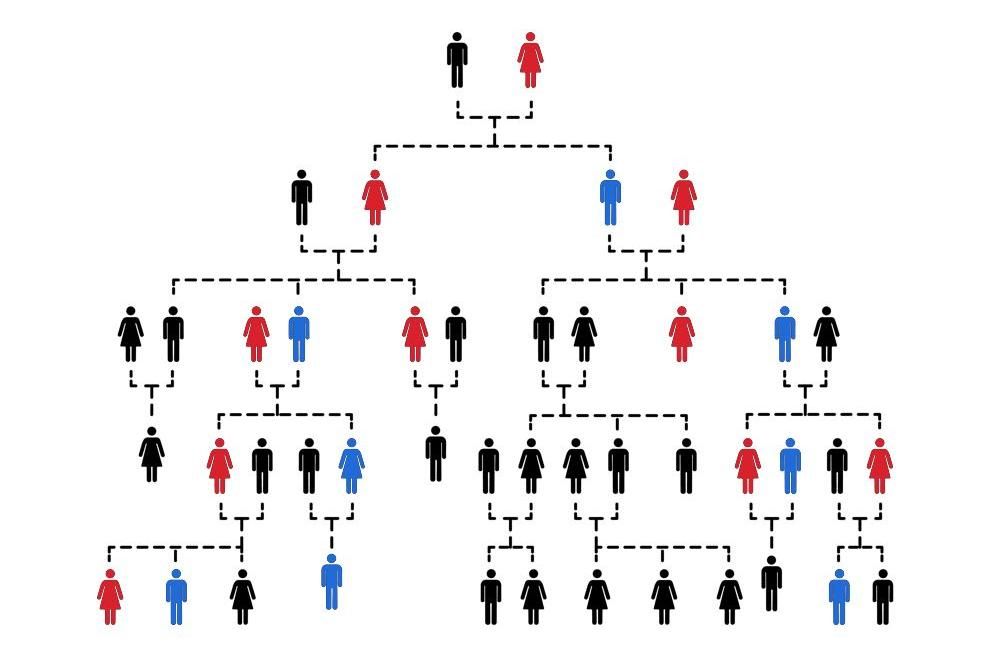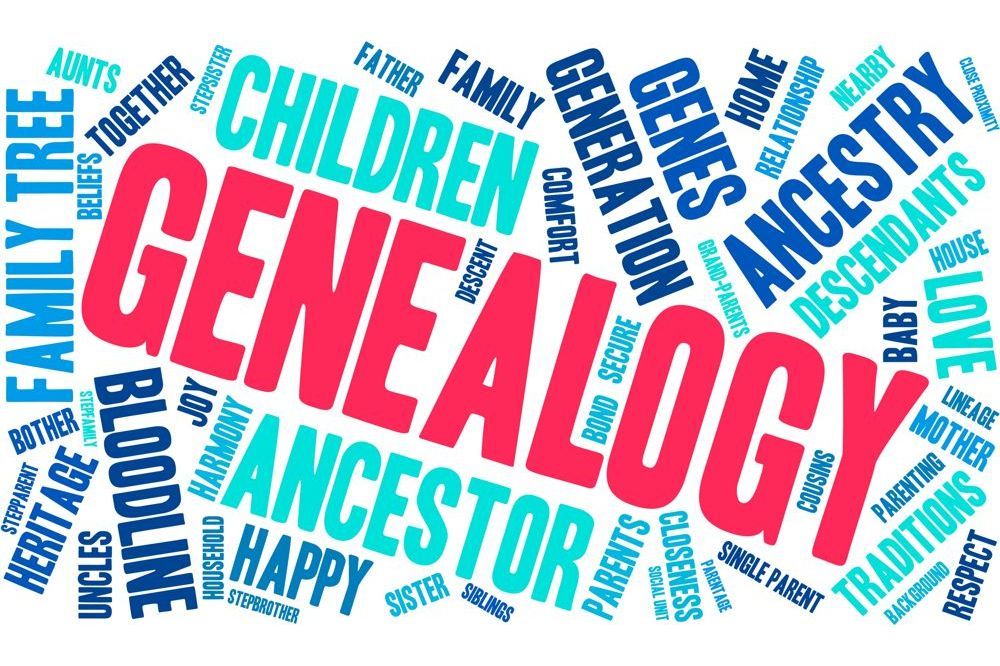The lecture Animal Breeding and Genetics in 2nd and 3rd semester deals with aspects of classical and molecular genetics, population genetics and pathogenetics. We work together with the Faculty of Agriculture of the University of Halle.
Genetics in veterinary medicine deals with many questions about animals, e.g. why do our pets look the way they are, where do they come from, what genetic diseases do they have and how can they be diagnosed. Furthermore, kinship relations are clarified, questionable breeding forms are discussed, rules of heredity are discussed and evolutionary processes are examined.
Genetics
Content and Objectives of the Lecture Animal Breeding and Genetics (Genetics Section)
Together with the Faculty of Agriculture of the University of Halle, the Institute of Immunology is responsible for the lecture Animal Breeding and Genetics, with staff members of the Institute of Immunology reading the section Genetics in 42 lecture hours.
Molecular genetics (incl. formal genetics and cytogenetics)
- Structure of DNA and packaging in the cell
- Structure of genes (incl. control elements)
- Understanding the processes
- from transcription to translation
- during mitosis (incl. semi-conservative replication of DNA and repair functions of DNA polymerases)
- during meiosis (incl. inter- and intrachromosomal recombination)
- Reason for mutations due to base changes
- Physicochemical modification of bases (e.g. tautomerism)
- repair options
- mutation types
- gene
- chromosome
- genome
- Influences on heredity
- Inheritance according to Mendel
- Influences of couplings and pleiotropies
- Dominance-recessiveness, intermediate inheritances
- interpret pedigrees (in the field of pathogenetics, depending on the location of the corresponding gene)
- Influence of epi-/hypostasia
- Evolution and species development
- Mechanisms of evolution
- Domestication of animals
Population genetics
- Transfer of genes in a population (selection, mutation, genetic drift)
- progeny examination
- kinship & inbreeding
- Phenotypic performance characteristics (heritability)
Pathogenetics
- Inheritance of diseases (forms)
- Monogenetic and multifactorial diseases (examples)
- "Torment breeding"
- disposition
- pedigree analyses
- Y chromosome
- diagnostic
- developmental genetics
- Epigenesis (methylation)
- Being able to explain the structure of DNA and its elements
- Being able to explain and describe the structure of genes
- Being able to name transcription control elements and explain the function
- be able to describe the structure of chromosomes and chromosome sets
- Being able to explain the structure of the genome
- be able to describe gene expressions
- be able to describe the genetic code
- be able to explain and describe the individual steps from transcription to translation (from gene to protein)
- Being able to explain replication
- be able to describe the cell cycle
- Being able to explain mitoses and their special forms
- be able to describe the processes involved in mitosis (know the individual stages)
- be able to explain the steps of meiosis
- be able to name forms of core phase change
- be able to explain sex determinations (especially in mammals and birds)
- be able to describe sex chromosomal inheritance via gonosomes
- be able to explain sex-limited inheritance
- be able to name DNA repair mechanisms
- Being able to explain changes due to methylation, alkylation, deamination, oxidation and mesomerism
- be able to name repair possibilities of the cell
- Being able to explain mutation forms (silence, missense, nonsense, dynamic mutation; insertion)
- be able to explain induced mutations in the context of animal transgenesis
- be able to name the purpose of the production of trangenic animals
- be able to name methods for transgenesis
- to be able to name the structure of the required elements for vectors for the transgenesis of animals
- Being able to explain gene targeting
- be able to explain conditional transgenesis
- Reasons for cloning and methods of cloning can state
- be able to identify and explain diagnostic methods (e.g. PCR, sequence analyses) for the determination of gene mutations
- Being able to name and explain forms of mutation (duplication, deletion, inversion, translocation)
- be able to name and explain diagnostic methods for determining genome and chromosome mutations
- be able to name and explain Mendel's rules (especially lethal factors)
- Being able to name and describe reasons for modified fissions
- be able to explain modified cleavages by couplings and pleiotropies
- be able to identify and describe epigenetic influences on the inheritance of traits (especially genomic imprinting by methylation)
- be able to describe gene mapping of coupled genes
- Being able to name and explain forms of intragenic interactions
- Being able to explain the penetrance and expressivity of genes
- Being able to explain forms of inheritance (autos. dom., autos. rez., gonos. dom., gonos. rez.) >>> being able to interpret and create pedigrees in the field of pathogenetics
- be able to identify and explain forms of intergenic interactions (redundancy, epistasia, complementarity)
- Being able to identify the driving forces of evolution
- Being able to explain the adaptation of populations to environmental conditions
- Can describe migration and bastardization
- be able to name variabilities within populations
- Character of mutations and mutation rates on evolution can name
- Being able to Name Population Structures
- Being able to name and explain selection forms
- be able to name the definition of the species term and explain the formation of the species
- be able to explain the concept of the molecular clock
- be able to identify the effect of genetic drift/flow on species development
- Being able to explain the effect of restricted recombination on domestication
- be able to identify domesticated animal species and their wild form
- To be able to name the history of domestication of important pet species and to name the molecular genetic bases with which the domestication of these breeds was determined.
- be able to describe the possibility of gene flow in domesticated forms
- be able to explain the concept of reproductive isolation in domesticated forms
- Reason for increase in variability and parallel formations in pet forms can name
- be able to name quantitative and qualitative characteristics
- be able to determine genotype and all frequencies
- be able to explain the concept of genotypic equilibrium
- Hardy Weinberg law can apply
- be able to name forms of selection (against dominant, against recessive, for heterozygosity, against heterozygosity)
- Being able to name equilibria in selection mutations
- be able to determine selection/fitness coefficients of selected selections
- be able to identify the genetic burden of the various forms of selection
- be able to identify, explain and apply forms of offspring testing (including pedigree analysis, molecular genetic testing, etc.)
- be able to explain the concepts of kinship and inbreeding
- be able to determine inbreeding and kinship coefficients (using the appropriate formulae)
- be able to explain the effects of inbreeding depression and heterosis effects
- be able to apply the concepts of quantitative genetics
- be able to explain additive/dominance effects on the breed
- be able to name phenotypic variances within a group
- Being able to explain heritability
- Being able to name correlations between performance characteristics
- Describe and determine selection/selection success
- be able to name breeding methods
- Being able to identify and explain the heredity of diseases, the proportion of heredity and environmental influences
- Forms of diseases (family tree analysis, dominant/recessive, autsomal/gonosomal
- be able to explain the concept of phenocopy
- be able to describe correlation between disease probabilities and similarity of affected individuals
- Being able to name family and breed specific diseases
- identify forms of disease by family pedigree analysis (dominant/recessive, autosomal/gonosomal)
- be able to name examples of monogentic diseases (incl. basis)
- be able to name examples of multifactorial diseases (incl. basis)
- be able to describe forms of coat colour regulation (e.g. agouti/extension locus etc.)
- SNP and whole genome studies using the example of coat texture regulation in dogs
- be able to name the breeding of pets for torture, including the basis (e.g. brachycephaly, altered eyes/extremities/spine, etc.)
- be able to call the breeding of tortures in dogs, cats, rabbits, ornamental/racial pigeons, poultry, ornamental birds, fishes
- be able to name prohibited breeding constellations
- be able to explain the concept of disposition in relation to hereditary diseases
- be able to explain diagnostic procedures for determining dispositions (e.g. SNPs, microsatellites, etc.)
- to be able to name allele-breeding-value correlations (using the example of HD in shepherd dogs)
- be able to describe methods for creating pedigrees (in relation to species) such as the distance method and Parsimony
- be able to explain the concept of genealogy
- be able to explain the determination of family relationships with the help of haplotypes using the example of foremothers and forefathers
- be able to explain the determination of the domestication of pigs and cattle using molecular genetic methods
- be able to describe the temporal development of the Y chromosome (especially the function of sry)
- be able to estimate the mutation rate of the Y chromosome
- be able to describe and evaluate Y-chromosomal inheritances (in relation to diseases)
- describe not only these diseases inherited from the father but also the mitochondrial inheritances (mitochondriopathies) inherited from the mother and be able to evaluate pedigrees
- be able to explain selected genetic diseases in cattle
- be able to explain the identification of the gene for CVM and the testing of the gene
- be able to describe the cause of the arachnomellia of the bovine animal and explain heredity, hereditary traits, mapping and testing
- be able to explain TSEs (in particular BSE and the models of origin, species barriers and pathogenetics in hereditary forms)
- be able to carry out risk assessment of ports for the development of scrapie
- Being able to explain the significance of structural genes for the expression of phenotypic organic traits using master control (Hox genes)
- to be able to explain the importance of the control genes for the regulation of body structure and the transformation of structures showing the example of Drosophila and in particular the development of extremities in mammals and birds
- be able to explain the influence of epigenetic factors (e.g. methylation of genes) on the expression of phenotypes and mutations using the example of the regulation of coat colour in agouti mice under the influence of methylating and demethylating substances
- be able to explain the diagnosis of epigenetic alterations of the genome with the aid of bisulfite sequencing
